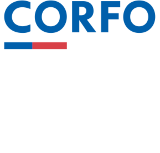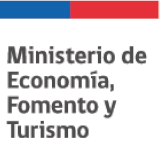Building upon the foundational idea that How Mythology Explains Modern Risks and Opportunities, we delve deeper into how ancient mythological archetypes continue to shape and propel innovation in today’s fast-paced world. Recognizing these timeless symbols and stories not only enriches our understanding of human creativity but also offers practical frameworks for navigating future technological and societal shifts.
1. Introduction: From Mythology to Modern Innovation
Ancient myths have long served as repositories of human experience, encapsulating universal themes of struggle, discovery, and transformation. These stories, passed down through generations, mirror our innate tendencies and serve as cognitive maps for understanding the world. As we transition into an era dominated by rapid technological change, these archetypal narratives continue to inspire innovative thinking, providing both cautionary lessons and creative catalysts.
“Mythology offers a lens through which we interpret modern risks and opportunities, revealing patterns that help us anticipate societal responses and guide responsible innovation.”
2. The Power of Mythological Archetypes in Fostering Creativity
Archetypes are universal symbols of human experience, representing fundamental motifs such as the hero, the mentor, or the trickster. These symbols serve as cognitive frameworks that help us interpret complex realities and generate innovative solutions. For example, the hero’s journey has inspired countless startups to craft compelling narratives around their brands and missions, fostering emotional engagement and pioneering new markets.
| Archetype | Modern Inspiration |
|---|---|
| The Hero | Tesla’s Elon Musk as a pioneering hero in space and sustainable energy |
| The Trickster | Innovators challenging norms, like disruptive startups overturning traditional industries |
| The Sage | AI and data scientists as modern wise figures guiding strategic decisions |
3. Archetypes as Drivers of Disruption and Transformation
Certain archetypes act as catalysts for disruption and societal transformation. The rebel archetype, exemplified by figures like Steve Jobs, challenged technological conventions, leading to revolutionary products that reshaped industries. Similarly, the explorer archetype drives scientific venture into uncharted territories, such as deep-sea or space exploration.
Recent case studies highlight how archetypal narratives influence startup culture. For instance, companies like SpaceX embody the explorer archetype, pushing the boundaries of space technology while inspiring societal shifts in our perception of possibility. The rebel archetype fuels the rise of disruptive fintech firms challenging traditional banking.
Case Studies of Archetypal Influence
- SpaceX and the Explorer: Revolutionizing space travel through daring exploration and innovation, reminiscent of mythic adventurers venturing into unknown worlds.
- Tesla and the Rebel: Challenging automotive and energy norms, embodying the archetype of disruption and radical change.
- Airbnb and the Trickster: Flipping traditional hospitality models, creating new paradigms in sharing economy and trust networks.
4. Mythology-Inspired Frameworks in Modern Problem-Solving
Applying mythological narratives to design thinking and strategic planning offers a powerful toolset for innovation. For example, storytelling frameworks rooted in archetypes foster shared understanding and motivate teams to pursue bold solutions. The hero’s journey, in particular, guides product development from conception to market success, emphasizing resilience and transformation.
Moreover, archetypal storytelling enhances collaboration by aligning diverse team members around common mythic themes. Integrating ancient wisdom with contemporary design methodologies—such as human-centered design—creates holistic solutions that resonate on cultural and emotional levels.
5. Unlocking Hidden Archetypes for Future Innovation
While many recognize archetypes like the hero or rebel, lesser-known mythological figures also hold potential relevance. For example, the Trickster from Native American myths exemplifies ingenuity and adaptability—traits essential for navigating complex societal shifts, such as climate change or digital transformation.
Cultivating new archetypes aligned with emerging technologies involves
- Identifying contemporary mythic figures or narratives that symbolize societal values
- Developing archetypal personas that embody emerging roles like AI ethicists or biotech innovators
- Applying techniques such as scenario planning infused with mythic storytelling to anticipate future challenges
6. Ethical Dimensions of Mythological Archetypes in Innovation
Harnessing archetypes for innovation also requires awareness of the power dynamics embedded within these symbols. For instance, the King archetype can imply authority and control, which, if misused, might reinforce hierarchical biases. Recognizing these pitfalls is crucial to fostering responsible innovation.
Promoting ethical practices involves:
- Critically examining the origins and implications of archetypal stories
- Ensuring diversity and inclusivity in myth-inspired narratives
- Implementing frameworks that prevent stereotypes from influencing innovation outcomes
7. From Archetypes to Action: Strategies for Innovators
Practical application of mythological archetypes enhances product development, branding, and team dynamics. For example, branding campaigns can leverage the Hero’s journey to craft compelling narratives that resonate deeply with audiences, fostering loyalty and trust.
Team building inspired by archetypal diversity involves:
- Creating roles and responsibilities aligned with archetypal strengths
- Encouraging storytelling sessions that explore personal mythic narratives
- Designing innovation workshops around archetype-based scenarios
Case Examples of Successful Archetype-Driven Campaigns
- Nike’s “Just Do It”: Embodying the hero archetype to motivate perseverance and achievement.
- Red Bull’s “Gives You Wings”: Tapping into the explorer archetype to evoke adventure and boundary-pushing.
- Apple’s “Think Different”: Celebrating the rebel archetype that challenges the status quo.
8. Connecting Back: Mythology as a Foundation for Navigating Risks and Opportunities in Innovation
Reflecting on how archetypes assist in anticipating societal reactions aids innovators in balancing risk-taking with ethics. Recognizing the mythic roots of certain narratives helps forecast potential backlash or acceptance, guiding responsible deployment of new technologies.
“Ancient stories are not just tales of the past; they are living frameworks that can shape our future innovations, ensuring they align with human values and societal needs.”
In conclusion, integrating mythological archetypes into innovation processes fosters a deeper understanding of human behavior, enhances creative potential, and provides ethical guidance. As we look ahead, these timeless symbols will remain vital in navigating the complex landscape of future risks and opportunities, grounding technological progress in the enduring wisdom of our collective stories.


